#Unsaturated Fats
Text
Vegetable oils are a staple in kitchens around the world, used for cooking, baking, and as ingredients in countless food products. Despite their ubiquity, there are many myths and misconceptions surrounding vegetable oils.
#Vegetable Oils#Cooking Oils#Healthy Fats#Olive Oil#Canola Oil#Coconut Oil#Trans Fats#Saturated Fats#Unsaturated Fats#Omega-3#Omega-6#Smoke Point#Cold-Pressed Oils#Expeller-Pressed Oils#Heart Health#Balanced Diet#Nutrition Myths#Cooking Tips
0 notes
Text
#Healthy eating habits#weight loss#fat#unsaturated fats#saturated fats#trans fats#portion sizes#healthy sources of fat#nuts#seeds#oils#fatty fish#avocado#olives#calorie intake#balanced diet#fruits#vegetables#lean protein#whole grains#appetite reduction#cholesterol levels.
0 notes
Text
Your Efforts May Go Wasted If You Didn’t Focused on Oils You Eat
Home cooks have many choices when it comes to choosing the type of oil for frying, grilling, and drizzling. Some are well known like olive oil and some are lesser known like avocado and coconut oil. It depends a lot on the type of dish. The point at which the oil starts to burn and smoke is one of the most important things to consider. Heating an oil above its smoke point not only spoils the taste, but also breaks down many of the nutrients in the oil, causing the oil to release harmful compounds called free radicals. If you want to know which oils are and which are not, there is disagreement.
1. Olive Oil
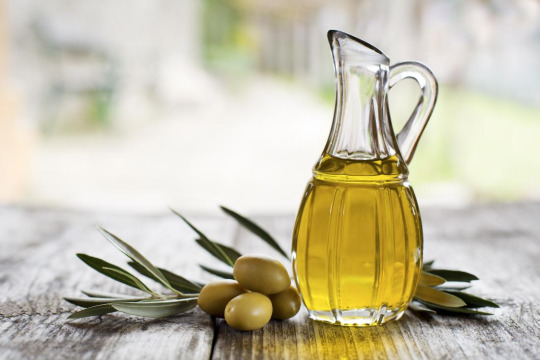
The nutrition and culinary expert agrees that olive oil is one of the most versatile and healthy oils for cooking and eating, as long as it is virgin. The "extra virgin" label means that the olive oil is unrefined and therefore of high quality. Extra virgin olive oil contains large amounts of monounsaturated fats and some polyunsaturated fats. Many studies show that it leads to better heart health.Olive oil has a relatively low smoke point compared to other oils, making it ideal for low to medium heat cooking.
2. Coconut Oil

Depending on what you ask, coconut oil should be avoided or consumed in moderation. The main point of controversy is its high saturated fat content. Unlike other vegetable oils, coconut oil is primarily saturated fat. While not everyone agrees that such concentrated sources of saturated fat are bad for your health, some experts, including the American Heart Association, recommend replacing foods high in saturated fat with healthier options. It claims that it can lower cholesterol levels and improve blood lipid levels. Still, science is beginning to suggest that not all saturated fats are bad for you. Not to make you sick, but don't overdo it.
But that doesn't mean it should be banned from the pantry.
Saturated fats are healthier oils to use when cooking or frying at very high temperatures because they are more stable at high temperatures (which should be done absolutely in moderation). This means they are less likely to collapse and smoke.
3. Vegetable Oil

The term "vegetable oil" refers to an oil derived from a vegetable source, the health of which depends on its source and intended use. Most vegetable oils on the market are blends of canola, corn, soybean, safflower, palm and sunflower oils. In general, we should use olive oil whenever possible instead of corn or soybean oil.
Still, because vegetable oils are refined and processed, they lack nutrients as well as taste. "Vegetable oil is guaranteed to be highly processed. Because it's called a 'vegetable,' manufacturers can use any commodity, including soybeans, corn, cottonseed, and canola, without having to print a new label."
4. Canola Oil

Canola oil, derived from the flowering plant canola, contains high amounts of monounsaturated fat and a moderate amount of fat. Contains polyunsaturated fat. Of all the vegetable oils, canola oil tends to have the lowest amount of saturated fat.
5. Avocado Oil

Avocado Oil is a good choice. Although it is not refined like extra virgin olive oil, it has a high smoke point, so it can be used for cooking at high temperatures and is ideal for stir-frying. It has almost no odor, so it is suitable for cooking. "It's creamy like an avocado," says Howard. Avocado oil contains both monounsaturated and polyunsaturated fats (it has one of the highest levels of monounsaturated fat of any edible oil) and also contains vitamin E.
6. Sunflower Oil

This oil is rich in vitamin E. One tablespoon contains 28% of the Recommended Daily Allowance of nutrients. It has a high smoke point and is less addictive, so it does not interfere with cooking. However, sunflower oil contains many omega-6 fatty acids. The body needs them, but omega-6 fatty acids are thought to be pro-inflammatory, whereas omega-3 fatty acids are anti-inflammatory. It is important to consume in moderation as it can cause excessive inflammation in the body.
7. Peanut Oil

Peanut oil can be fun to experiment with in the kitchen, especially since there are so many different types. Peanut oil contains the highest levels of monounsaturated fatty acids of any edible oil. It is usually savory with a nutty taste and aroma and is well cooked over high heat.
8. Walnut Oil

This oil has a low smoke point, making it unsuitable for cooking, but it can be used in many other ways. Howard drizzles pancakes, freshly cut fruit, and ice cream with oil. She also adds it to frothed milk to drink her coffee.Walnut oil has a high ratio of omega-6 to omega-3 fatty acids, which helps reduce inflammation. Images
Flaxseed oil is high in omega-3 fatty acids and has a very low smoke point, so don't even use it in cooking.
9. Sesame Oil
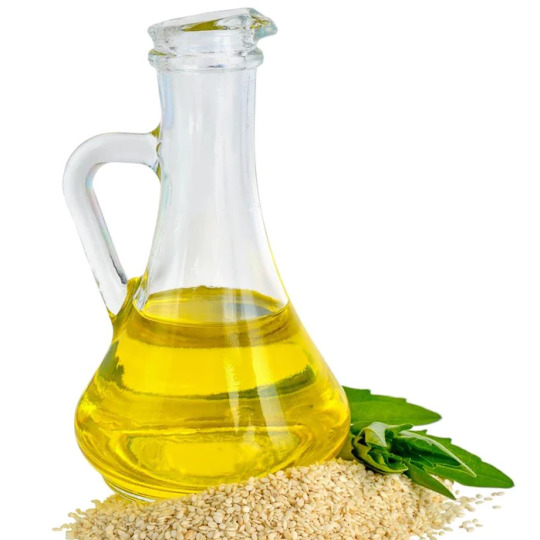
This oil is often used because of its strong flavor. Small things make a big impact. It contains both monounsaturated and polyunsaturated fats, but is not particularly rich in other nutrients.It has a high smoke point and can be used in high heat recipes.
#Healthy oils#olive oil#focus on oils you eat#know about the oils#sesame oil#coconut oil#peanut oil#cooking oils#healthy heart#saturated fats#unsaturated fats#monosaturatedfats#which fat is bad or good for health#know your food#fat control
0 notes
Text
that post about the "carnivore diet" is too long and people are debating vegetarianism on it so I just want to say separately that carnivore diet will shoot up your LDL which puts you at greater risk of a heart attack eat some fiber please
#“70-80% of calories from fat” you are going to give yourself a cardiac event#jesus fucking christ#like yeah the scurvy is bad also#but you will DESTROY YOUR HEART#if you are doing this please go see a doctor and get your blood work done so you can start undoing it#and eat an avocado get some fiber and unsaturated fat in your body asap#though you'll have to start slow with the fiber and ramp up#otherwise you'll give yourself a blockage#christ
3 notes
·
View notes
Text
Saturated fats are primarily animal-based fats (with the exception of some plants). Unlike healthy unsaturated fats that are liquid at room temperature, saturated fats are solid at room temperature. Saturated fats are the inflammatory fats, while unsaturated fats are anti-inflammatory. Regularly consuming saturated fats may raise cholesterol and increase risk of heart disease. It can also contribute to high blood sugar and fatty liver disease. If you consume it, it is recommended you do not exceed 13 grams/day. Lean towards your anti-inflammatory and brain health fats, the unsaturated fats.
#highbloodsugar #diabetes #bloodsugar #insulin #cells #cellhealth #saturatedfats #animalfats #glucose #muscle #hearthealth #unsaturatedfats #healthyfats #brainhealth #antiinflammatory #healthtips #nutrition #omega #fattyliver #fats #cholesterol #weightloss #meat #foodisinformation #healthyeating #disease #health #healthy #healthyliving #healthylifestyle
#blood sugar#Diabetes#heart health#stroke#heart attack#Health#Heathy#Health tips#cholesterol#LDL#HDL#liver health#fatty liver#liver disease#fats#healthy fats#unhealthy fats#saturated#saturated fats#unsaturated#unsaturated fats#heathy living#healthy habits#healthy lifestyle#diet#Nutrition#brain health#Inflammation#antiinflammatory
9 notes
·
View notes
Text
Mater caught me in the right astral alignment to get me to try crochet after. 25 years?
Say hi to my beautiful son Unsaturated Fat! (Don't worry it'll be unraveled and reused for something straighter when I'm done with it)

(I think I skipped some loops and I changed stitch at some point lmfao)

Fatty acids for reference
#I am very giddy. it's so good to allow yourself to suck!#Unsaturated Fat was meant to be a plain rectangle and I find it very funny#gotta keep my jack of all trades master of none title u kno?#if you need a sign to start something new this is it. you have the goose' blessing (honk)
23 notes
·
View notes
Text
Fats of land animals typically contain approximately 40% to 50% saturated fatty acids by weight (table 23.5).
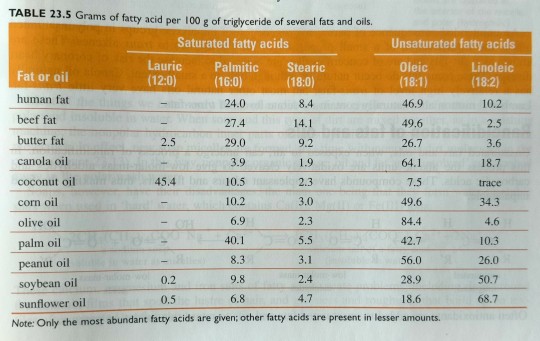
"Chemistry" 2e - Blackman, A., Bottle, S., Schmid, S., Mocerino, M., Wille, U.
#book quotes#chemistry#nonfiction#textbook#animal fat#land animal#fats#oils#triglycerides#fatty acid#saturated#unsaturated#human fat#beef fat#butter fat#canola oil#coconut oil#corn oil#olive oil#palm oil#peanut oil#soybean oil#sunflower oil#lauric acid#palmitic acid#stearic acid#oleic acid#linoleic acid
0 notes
Text
Hey, so saturated fats aren’t as bad as previously thought, but there’s no clinical benefit to eating saturated fats as far as we know. They may not be generally harmful, but they aren’t necessary or beneficial either.
#they’re also usually found in foods that aren’t very nutritious anyway so it is generally better to get your fats from other sources and#try for more unsaturated fats than saturated fats
0 notes
Text
The Best Natural and Homeopathic Methods to Reduce Fat in the Body
The Best Natural and Homeopathic Methods to Reduce Fat in the Body
This article is about how to reduce fat in the body with natural and homeopathic methods.
The best natural and homeopathic methods to reduce fat in the body are:
– Taking a hot bath for 15-20 minutes.
– Doing some stretches after taking a bath.
– Eating healthy food, such as fruits, vegetables, and whole grains.
– Drinking at least 8 glasses of water every day.
– Doing some exercises like…

View On WordPress
#essential fatty acids#fat reduction medicines#fat type#fat-producing foods#fats and oils#how to reduce fat#metabolism boosting exercises#metabolism boosting foods#saturated fat#saturated fats in diet#unsaturated fat#weight loss tips
0 notes
Video
youtube
THE 3 TYPES OF FATS - Unsaturated Fat - Saturated Fat - Artificial Tra...
0 notes
Note
are amphibians like newts and frogs considered aquatic? i know crustaceans & mollusks would be
Yes they are! Generally, the more time it spends on land, the closer it will be to 5 calories than 4. The estimate was actually based on frogs and tadpoles, I had to make an educated guess.
My best source was a feeding chart from a reptile food website which sells whole small prey for consumption by snakes. It perfectly lists out the values of dozens of small animals, but no fish. So I took a note of the 4 calorie estimate, observed that an adult frog increases in calories compared to tadpoles (bucking the trend with the others on the list where younger animals are worth more caloric value) and went on to do more research
I couldn't find a source that broke down WHOLE prey caloric value like the chart, so I ended up comparing caloric value between rabbit fillets, chicken fillets, and fish fillets on human-centric nutrition websites. My hypothesis was mostly consistent, even with more species added. Fish (perch, flounder, pike) < Wild Mammal (rabbit, squirrel) < Poultry (chicken, turkey, quail). There was overlap between "classes", certain fish getting over the 100 hump, but generally there was a trend I boiled down into 4/5/6
This is consistent with how a lot of fish meat is actually water. In fact, cats quench a lot of their thirst from the food they eat. I also learned some very interesting stuff about the fat distribution in fish which is going to blow a bit of a hole in some of my Clan culture stuff lmaoooo, but I'll furiously swim across that obliterated bridge when I get there
But funfact! Fish oil is rendered fish fats and it is the form that unsaturated fat takes, whereas lard is what saturated fats become. I need to do more research into this topic to understand what kind of difference it would make in a wild cat's diet.
There was one big bucked trend though: salmonid meat was WAAAAY higher in fat and calories. Like, absurdly high. Like 150 cal trout fillet vs 110 cal of rabbit fillet vs 88 cal of perch fillet.
I do not know why that is. My guess is that maybe it's because they were taking the number from farmed salmonids? Maybe it's because they're particularly fatty fish? Perhaps this is just the raw power of salmon slammin'.
Anyway, at one point I was trying to estimate exact caloric value per popular prey species, but decided I didn't have the "backing" to get so exact with the numbers since I was doing estimates with the fish. I'll do the work if it comes down to it, but for now, 4/5/6 is a quick, easy guideline you can use for just about any WC project.
#I was planning for Bb!RiverClan to be the guys who didn't cook much#Being quite snooty about it and insisting it's good for you#But it turns out they're actually at the highest risk of getting worms for that#Maybe I'll keep it for the irony because that sounds VERY funny#Cleric in the corner SOBBING because Waterpool just caught tapeworms for the 4th time#Willowpelt over in TC like ''I ALWAYS KNEW THEIR GLOSSY COATS WERE TOO GOOD TO BE TRUE!!''#No wonder her daughter Sorrel has a thing about worms lmaoo#I need to do more research but what I've come across here is that. Like. Actually?#A fish-only diet might cause a lot of really specific and pretty serious problems in RC#Another is that fish have so many micronutrients that some of the sites I visited were warning about some of those 'overdose' side effects.#The carp example was just the most interesting#I guess I had been assuming a lot based on the conception of fish as being 'the healthy meat'#Clan culture#Nutrition guide#Bone babble
77 notes
·
View notes
Text
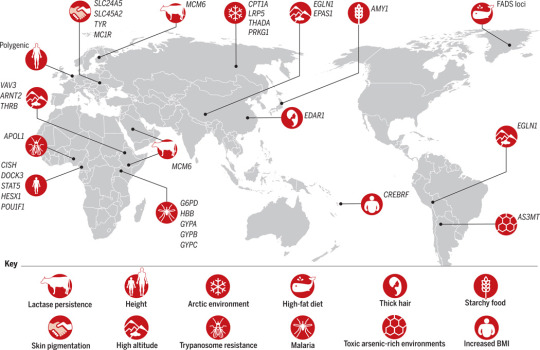
Recent evolutionary adaptations to the environment in human populations, from Going global by adapting local: A review of recent human adaptation (Fan et al., 2016). The icons show the type of adaptation recorded in various parts of the world, and the acronyms besides (e.g. EDAR1) are the names of the involved genes. Also see Genome-wide detection and characterization of positive selection in human populations (Sabeti et al., 2009), Population Genomics of Human Adaptation (Lachance & Tishkoff, 2013).
Some examples are:
Lactase persistence in Europe, Near East, and East Africa, allowing the digestion of milk in adult age (by default, the lactase required to digest milk sugar would only be produced by infants; this was just a matter of removing a timed switch).
Similarly, greater production of amylase, which breaks down starch, is reported in Europe and Japan (diet based on farmed grains) and among the Hadza of Tanzania (diet based on starchy tubers).
Improved conversion of saturated into unsaturated fatty acids in the Arctic Inuit peoples. This makes it easier to live on a diet of fish and marine mammals in an environment where plant food is scarce.
Smaller stature ("defined as an average height of <150 cm in adult males") in the "pygmy" peoples (Aka and Mbuti) of Central Africa, and other hunter-gatherer peoples in equatorial Asia and South America. This helps shed heat in a hot humid climate where sweat does not evaporate.
More efficient fat synthesis in the Samoa, helping with energy storage at the price of more risk of obesity or diabetes with a richer modern diet.
Improved resistence to malaria, sleeping sickness (trypanosome), and Lassa fever in Subsaharan Africa. Fighting off against parasites is especially difficult (since unlike the inorganic environment, parasites also evolve), so this resistence often comes at a cost, such as anhemia, but is still a great advantage on net. Some improved resistence to arsenic poisoning is noted in an Argentinian population.
Denser red blood cells on the Andean, Ethiopian, and Tibetan highlands, to carry more oxygen which is scarcer at high altitude. I recall from elsewhere that this might increase the risk of thrombosis or strokes due to obstructed blood vessels.
Less melanin (which blocks UV light) and therefore lighter skin color in Eurasia. Melanin shields skin cells from damage due to UV radiations, but some UV light is necessary for the synthesis of vitamin D.
A change in the gene EDAR1, resulting in denser head hair, slightly different tooth shape, and fewer sweat glands (all skin annexes), appears strongly selected for in East Asia, but as far as I can find the advantage of this mutation is still unknown.
From another article (Ilardo et al., 2018): the Sama Bajau people of Indonesia, who have a long tradition of free-diving in apnea, seem to have developed larger spleen to store more oxygenated blood during dives.
31 notes
·
View notes
Text
You need to consume unsaturated fats or you'll feel slow, fatigued, and never want to do anything.
You have to learn the healthy fats and eat the healthy fats if you're committed to being vegetarian or vegan. Or you will be tired forever, and not the type of tired where you can push through it, but the type of tired where you feel like you have to stay in bed all day and your heart feels like it's being sucked through a straw.
Fatty acids are what lipids in our bodies are made mostly up of. Fatty acids are responsible for energy storage, brain development, blood clotting, and controlling inflammation. They are necessary for your body to be able to absorb vitamins such as vitamin A, D, E, and K. They are necessary for your body to produce sex hormones like testosterone and estrogen. Not having enough of these fats can cause muscle pain, night blindness, infertility, easy bruising, dry hair, hair loss, loose teeth, depression and anxiety, and dermatitis (presenting as dry and scaly rashes).
You need unsaturated fats such as monounsaturated and polyunsaturated fats. These are good fats. Saturated fats and trans fats are bad, these are what raise your risk of heart attacks and strokes. Diets high in saturated fats might also lead to chronic pain.
35% of your caloric intake should be fats. This can be added to the list on why the diet industry is so cruel. Manufacturers and organizations paired with the pornography and cosmetic industry pushing dieting and beauty norms on women and girls for decades impressed the seriously dangerous and false idea that consuming fats was bad. Denying healthy fats means denying healthy brain development, energy and motivation, better ability to heal from injuries, and preventing depression and anxiety.

Balsamic and olive oil together (and you can add some minced garlic if you like) tastes fantastic with warm bread and can be made in 12 minutes.
Cooking with the oils above instead of butter can also introduce fatty acids in your diet (might not be enough though, you need 1-2 tablespoons a day).
Sometimes if I'm in a hurry I just eat a plain avocado a day.
You can sprinkle chia seeds on yogurt. Add flax seed to smoothies.
Just eat 1/4th of pumpkin seeds too (which are also super high in magnesium). That's basically a handful a day, make it part of your morning routine.
Almonds, walnuts, and pecans are also high in good fats.
121 notes
·
View notes
Text
Table 23.4 gives common names and structural formulae for the most abundant fatty acids.

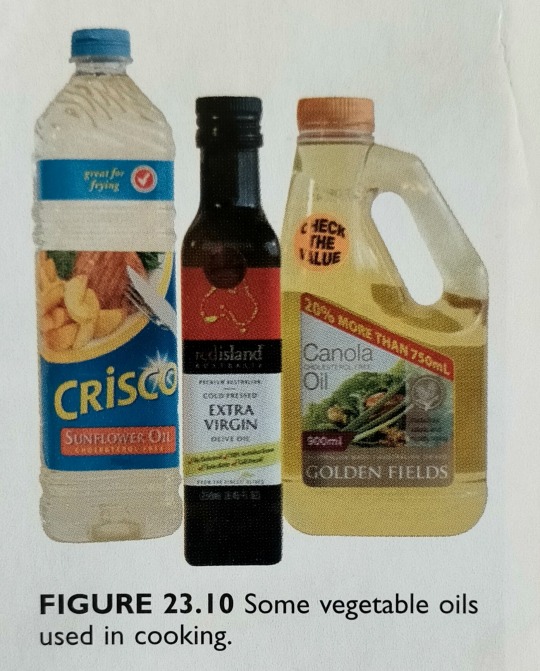
"Chemistry" 2e - Blackman, A., Bottle, S., Schmid, S., Mocerino, M., Wille, U.
#book quotes#chemistry#nonfiction#textbook#fatty acid#animal fat#vegetable oil#biological membrane#crisco#olive oil#canola oil#saturated#unsaturated#lauric acid#myristic acid#palmitic acid#stearic acid#arachidic acid#palmitoleic acid#oleic acid#linoleic acid#linolenic acid#arachidonic acid#hydrocarbons
0 notes
Text
What is the closest thing to drinking half and half that gets you unsaturated fat instead of saturated fat?
23 notes
·
View notes
Note
Hi thanks so much for the contents they're very inspiring. Can I ask what you eat daily, nutrition-wise, while bulking? Do you minimize fats? How does your physique goal look like?
I’ve talked about this before on the tag #bulking and eating related, but in short I eat basically the exact same things every day. There is some variety, but I always eat fried eggs with either 4 pieces of toast (bakery bread, not processed grocery store stuff) or hash browns cooked in a bunch of olive oil. I eat plain full fat Greek yogurt every night and add fake sweetener, dark chocolate chips, and whatever flavor or fruit I want. For lunch I eat whatever is available at my job for free (could be anything at all) or 2 sandwiches. I was eating a lot of protein bars but not so much right now. I eat a lot of nuts and seeds as snacks, with fruit and cheese. At least 2 vegetables every day. I eat a ton of pasta and fix it up between regular and chickpea pasta, and either use vegan beef or ground turkey with it and also a ton of Parmesan and olive oil.
For other snacks I’ll eat plain ground turkey sometimes and just choke it down (literally) or handfuls of lunch meat. In short I absolutely do not limit fats, but do try to stick with healthy-ish omega 3 unsaturated fats. Limit added sugar if anything, but I don’t as much right now because I’m eating whatever I can basically. I drink whole milk at least once a day bc calcium is extra important for guys on T since there’s (maybe) heightened risk of osteoporosis (we aren’t sure). I make homemade protein balls too. Oh, and lots of peanut butter plain out the jar cus idc.
I don’t count calories or macros at all right now and just eat balanced snacks or small meals every 2 hours when possible. I’m not going for a super lean look because it’s not my taste, I want some body fat for a “bulkier” look but maybe lean enough to sort of see my ab definition just not crazy defined. I want to look BIG big so super lean doesn’t lend itself to that unless I literally take steroids, but I won’t do that because I need to be calm and level-headed for my job and partner lol.
14 notes
·
View notes